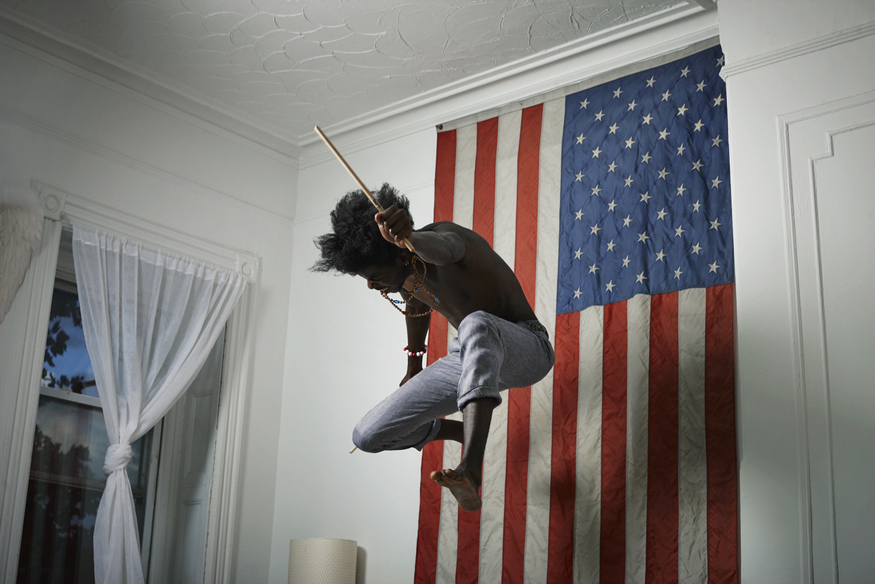This is a sponsored article on behalf of The Photographers' Gallery.

An exhibition of music photography where the fans get as much space as the musicians? We Want More, a new exhibition at The Photographer's Gallery, does just that. Tabish Khan asked curator, Diane Smyth, a few questions about how the show came together.
How did you go about selecting the artists in the exhibition?
I made a conscious decision to focus on recent work, as I feel music photography exhibitions in London often focus on historical shows, picking out the great eras in music — be it the 1960s, punk or (more recently) rave. I very deliberately mixed personal work with commissions, but I was keen to have a few different perspectives and routes on show, e.g. work that's intended for the digital realm, work intended for publicity and work intended for a gallery. I focused on work that I found unusual or creative — there are lots of press shots of performers on stage but I didn't find many that interested me.

You've dedicated one half of this show to photographs of fans. Why was this choice made and how does it change how the viewer experiences the show?
I was very keen to have a floor devoted to pictures of fans, I think it puts the viewer in a different position to the subject. On the fans floor, maybe the viewer can relate to the people depicted, because most people are music fans to some degree or other — and therefore think about how people come across in these images, rather than how they experience music. There's a movement between the subject and the photographer in all the images — in the Pep Bonet images, a photographer who started shooting Motörhead because he's a fan, ends up standing on stage with the band, photographing the fans as a crowd, a mass of faces.
Dividing the show also makes for a contrast between the way the musicians are photographed and the way the fans are photographed. The musicians are often one person photographed multiple times in different ways to try to maximise publicity, whereas there are always a lot of fans, whether they're photographed individually or in groups. Finally I think there's an interesting movement towards photographing fans — Vice magazine's Noisey likes to photograph fans for their online magazine because they feel the internet is already flooded with standard press portraits of musicians.
Music has a close link to the music video, but how does it interact with photography?
Good question! To me it's interesting that music photography exists at all, given that photography is visual and music is aural, and that music is temporal whereas photography captures a moment in time. I guess it's partly historical, when music photography first got going it was pretty hard and very expensive to shoot moving image, there's also the link with packaging so even when music videos came along still images were needed to go on the album covers. It's interesting now that music has largely moved online, there's more interest in moving images — pop videos or gifs, and that's why I was really interested to include both of those in the show. Maybe a still image can also say something about music that a moving image can't — Sean O'Hagan wrote something about the best music photography conveying "the sense of suspended time that music itself carries" in his review of the show, which I really liked.

Gareth McConnell's photographs are quite surreal, can you tell us more about his technique?
Gareth's project is really interesting, particularly as he started out by taking straight documentary portraits of young people in Ibiza, some of which were published in style magazines at the time. As I understand it, he became frustrated by the disconnect between the way these images look and the feeling of living that lifestyle, and so he did things like rephotograph images which had been printed in magazines, but holding the page up to the light so that the image on the next page showed through too, or double negatives and other techniques. He also added a lot of images gleaned from the internet, adding wider political and cultural dimensions to the images. It's worth pointing out that many of the images in the show were not originally intended for art galleries, and haven't previously been shown in this kind of space.
We Want More: Image Making and Music in the 21st Century is at The Photographers' Gallery, 16-18 Ramillies Street, W1F 7LW until 20 September. Entry £3, members free. Also on at this gallery is a collection of Shirley Baker's photographs showing how urban clearance destroyed working class communities.
Interview by Tabish Khan.


